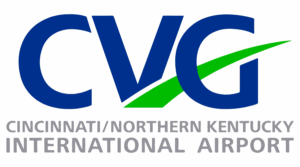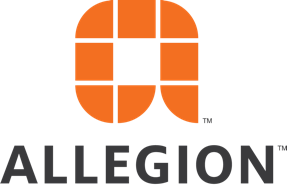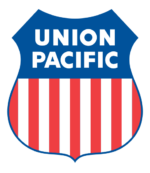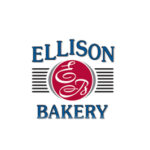Let us help you make sense of PSM / RMP!
My friend Brian Chapin will be offering an open-enrollment PSM/RMP class in Burleson, Texas, July 8th to 11th, 2025. Brian is an absolute pro in NH3 Refrigeration Process Safety. Anyone who attends will also get a FREE membership to SAFTENG. You can get more information on the class with this link.
CLICK HERE to Renew your Membership
CLICK HERE for a NEW Membership
CLICK HERE to see eligibility requirements for FREE Membership
If you have any questions, please contact m
SAFTENG has:
- Over 18,000 categorized unsafe acts/conditions and accident/injury photos
- Over 1,500 ppt's & doc's in the SAFTENG Library
- Over 4,000 Technical Articles on Process Safety, Emergency Response & OSH topics
- Over 450 videos (those not allowed on YouTube Channel)
Many THANKS to my NEW Members and those who CONTINUE to support SAFTENG:














March 18, 2011
I found this study to be VERY INTERESTING in that I have always said you line 20 of us and show us all the same photo and ask us, one ata time, to identify the hazards in the photo. We all know how big a spread we would lie in!!! In this study, 31 qualitative tools used for estimation risks associated with industrial machines and which follow the ISO 14121-1: 2007 guidelines were analyzed...
Read More
March 18, 2011
Data show the most dangerous part of HAZMAT occurs when it is transferred between the rail or truck. PHMSA has announced a proposed rule that would protect the public by improving the safe transfer of hazardous materials to and from rail cargo and highway cargo trucks. The proposed rule would require additional employee training and new safety requirements for motor carriers and facilities that transfer...
Read More
March 18, 2011
So far we do NOT have all the facts of what happened at the Nuclear Power Plant in Japan when the earthquake and tsunami hit, but we have gotten some insight into what is supposedly occurring in the aftermath of these concurrent disasters, which very well may lead to even a larger disaster with much longer impact than the earthquake and the tsunami combined!
…
HomeRead More »
Read More
March 17, 2011
by Jim Worman, Senior Staff Engineer with The National Board of Boiler and Pressure Vessel Inspectors
If you have contractors or on-site engineers doing pressure vessel inspections, this is one method they may choose. This article is VERY WELL written and is a MUST READ for those not formally trained in this method of inspection.
…
HomeRead More »
Read More
March 17, 2011
Workers’ perceptions with respect to health and safety at work are rarely taken into account when considering the development of prevention programs. The aim of this study was to explore workers’ perceptions of chemical risks at the workplace, in order to investigate the prerequisites for a workplace health program.
…
HomeRead More »
Read More
March 17, 2011
A portable generator containing more than 17 ounces of liquid fuel is excepted from the Hazardous Material Regulation provided the requirements in § 173.220(b)(4) are met.
…
HomeRead More »
Read More
March 17, 2011
If you are in a FD, on a HAZMAT team, in EHS at a facility with HHC’s that could have an offsite impact this is the BEST $5.99 you will ever spend. This app is GENIUS and just blows away the Green Tables in the 2008 DOT ERG. This app has the DOT ERG chemicals and you look them up by UN # or name and you choose Large/Small spill, Day/night, etc. and the thing gives you a plume laid over...
Read More
March 17, 2011
Story of Interest Workman who vanished eight years ago was gassed and crushed in fridge recycling machine INDUSTRIAL OIL FIELD FATALITY Seguin man killed in West Texas oilfield accident (an oilfield accident has killed a worker, 44, who was crushed by some pipes he was trying to move – some pipes apparently slipped and he was crushed – he was pronounced dead at a hospital – he had...
Read More
March 17, 2011
Many THANKS to my NEW {amp}amp; RENEWING Corporate Partners in Safety! since 2/11 Electrical (2010 = 90) Forklift/Manlift t{amp}nbsp; (2010 = 110) Mining 32 (2009 = 586) 39 (2009 = 302) (2009 = 82) (2010 = 139) (2008 = 250) (2010 = 50) Trenching 6 (2009 = 48){amp}nbsp; (2008 = 90) 12 (2009 = 68) (2008 = 66) (2009 = 73) (2008 =137) {amp}nbsp; INDUSTRIAL PCS Phosphate: Worker killed, name released (...
Read More
March 17, 2011
Many THANKS to my NEW {amp}amp; RENEWING Corporate Partners in Safety! since 2011 since 2009 since 2004 since 2/11 2011 Fatality Tracker Electrical 4 (2010 = 90) (2009 = 100) Forklift/Manlift Mobile Equipment{amp}nbsp; 22 (2010 = 110) (2009=88) Mining 35 (2010 = 480) (2009 = 586) Explosions 42 (2010 = 246) (2009 = 302) Cranes 3 (2010 = 50) (2009 = 82) Falls 22 (2010 = 139) (2009 = 172) (2008 = 250)...
Read More
March 17, 2011
A DOT Proposal will revolutionize Rail Hazmat Tank Car Safety, improve puncture resistance, limits speed, and phases out oldest from most toxic service The safety of rail tank cars that carry the most dangerous hazardous materials will be dramatically improved under the most sweeping and revolutionary proposal in decades. The proposal requires tank cars carrying Poison Inhalation Hazard (PIH)...
Read More
March 17, 2011
Because the safety relief valve performs such a vital role in protecting the propane tank, it should be maintained and repaired by licensed propane professionals only.
…
HomeRead More »
Read More















